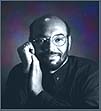 Trance Dance - Meditation in Motion by Wilbert Alix
Trance Dance - Meditation in Motion by Wilbert Alix
Trance dance, an ancient shamanic practice, is a healing vehicle through which people can commune with their spirit. In contemporary society, dance has been turned into a recreational pursuit or form of exercise—its spiritual significance has been lost over time. Dance isn’t the only casualty. Many once sacred experiences have been turned into recreation. Sex is one; teacher-plants, originally used in ritual for the purpose of spiritual connection, are another.
In trance dance, you must be willing to have a clear intention when you go into the dance. Intention invites spirit and directs the course of your dance.
I first discovered the healing effect of trance dance in 1989. For years I had lived with chronic pain in my lower back. I could not find anything to heal me. So I made an intention to heal my lower back. I wanted to explore the potential of a bridge between intention (seemingly a purely mental construct) and other realms—emotional, physical, spiritual.
Trance dancing with this intention unexpectedly brought up deep memories of my parents and their relation to money. At a point in the dance, it became emotional—and I understood for the first time how I had embodied my family’s struggle with money issues. Quite spontaneously, I began moving my body in a way that I’d never moved before, especially my lower back. And from that point on, I have not had any difficulty with this part of my body.
For human beings across the world, trance dance has been the most prolific way by which we connect with the spiritual. Dance is cross cultural—it exists, and has always existed, in every shamanic society on every continent on the planet. They all danced.
For some people, the word “trance” is frightening. But trance is really nothing more than another word for meditation. Trance and meditation are vehicles to move you to the state of ‘no mind.’ The question is, how do you get to that state? When you meditate, you sit in silence for extended periods of time until the mind empties out and you become an empty vessel. Then your spirit can surface.
Trance is the same way, except the doorway is different. It’s done through catharsis. It’s done through rhythm, sound and movement of the body. What occurs, either in that movement or at the end of that movement, is trance, a very deep meditational state.
Traditionally, trance dance has always been accompanied by the rhythms of drumming. Why the drum? Instinctively, we know that sound. It is the beating of our heart. That constant beating sound is a meditative sound. When we are quiet, we hear it in our bodies. The beat moves us into a trance state when the rhythm is unbroken, and constant. At some point, the brain stops listening to it and trusts that it’s there.
If you listen to the rhythm—eyes shielded by a bandana, breath flowing in patterns—and move, a gradual dissociation with your ego will take place. It is not permanent. It’s a temporary place that you go, but it does have lasting effect. When you come back out of trance, less of your ego is there and more of your higher self is present—more of your intelligent self, your wisdom. People who dance over extended periods of time notice a marked increase in frequency of insight and revelation.
My first introduction to dance, rhythm, movement and the bandana came from the moving meditations taught by Rajneesh. Rajneesh was quite gifted in his understanding of the Western mind—he knew that we have a difficult time going empty, being still. To ask a Westerner to sit in meditation is to subject him to years of doing nothing. Rajneesh understood that if you move, taking away the dominant sense, vision, it is easier for the mind to quiet down.
Trance dance is pure energy. Trance dance is the vehicle by which you become that energy—with intention—and that’s what makes it remarkable. At the level of spirit, anything is possible.
Wilbert Alix, Director of The Natale Institute, International, will be coming to Northwest Oregon to teach Trance Dance. www.trancedance.com

